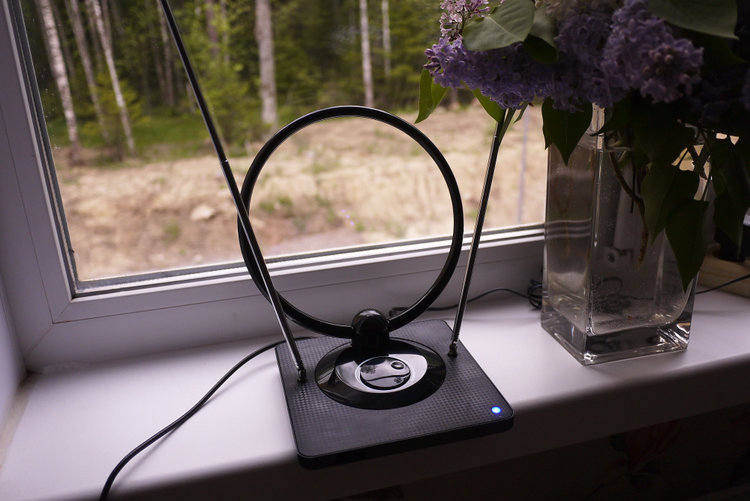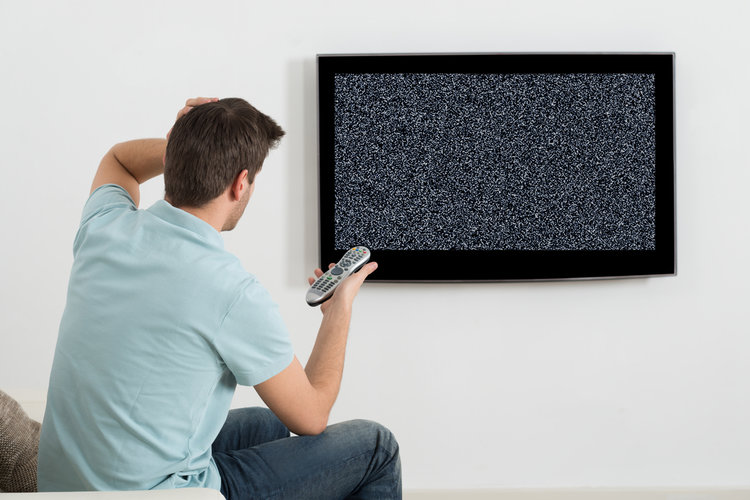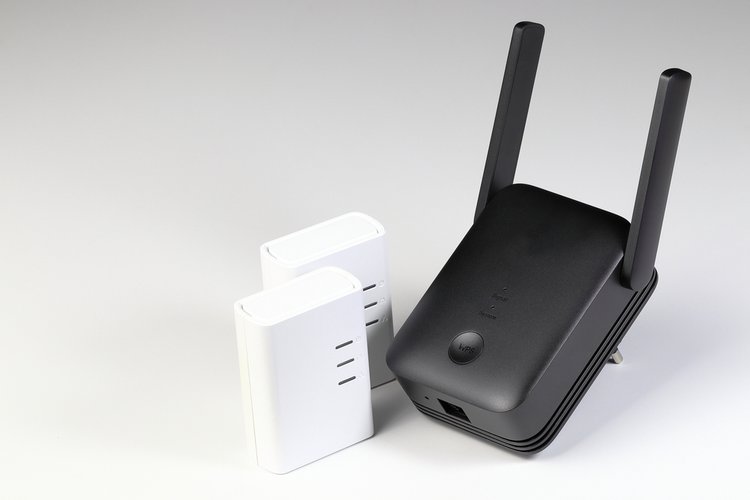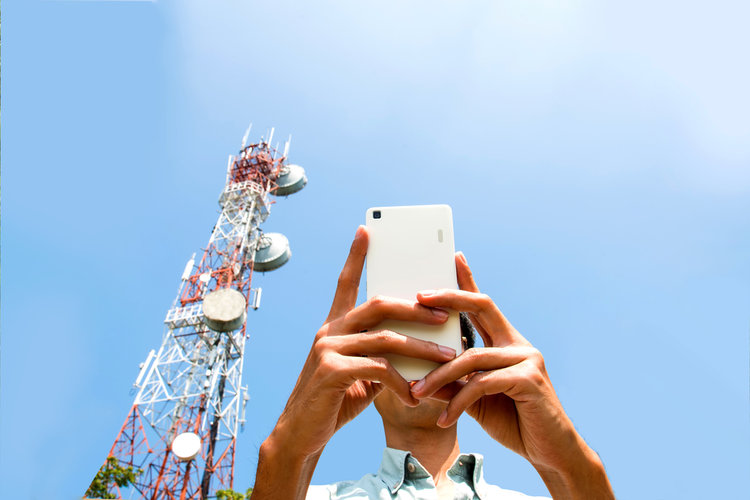Why Do Airplanes Interfere With TV Reception? Here’s How To Mitigate It

What To Know
- Airplanes can cause “multi-path interference” or “airplane flutter” to TV signals by reflecting broadcasted signals, leading to reception issues like ghosting or signal loss.
- Various household electronics, FM signals, LED lights, cellphone towers, and even outdoor elements like trees can interfere with TV signal quality.
- To mitigate airplane flutter, adjustments like installing a directional antenna, using an antenna rotator, or adding an amplifier may improve signal reception and reduce interference.
In this article, we’ll discover the impact of airplanes on TV reception and learn how to tackle the “multi-path interference” they cause.
Let’s dive in!
Quick Navigation
Do Airplanes Affect TV Reception?

Yes, airplanes affect TV reception if you’re using an external or indoor antenna for your TV.
The airplane doesn’t block the signal per se, but it causes electromagnetic interference, or one of the multiple signals the local station gives off can reflect off the airplane’s body.
The result is your TV antenna receives multiple signals and gets confused. The phenomenon is called “multi-path interference” or “airplane flutter.”
The issue was prominent during the analog TV days when users saw ghosting or images rolling vertically.
In the current digital era, airplane flutter is not a common phenomenon but is also not wholly eradicated. It depends on how well the TV’s built-in tuner can work with the distorted signal.
For people unaware, the tuner allows your TV to receive signals transmitted over the air.
The tuner often fares poorly, resulting in a loss of the digital broadcast. In other words, the TV tuner’s sensitivity can also hurt reception.
What Happens When Your TV Encounters Reception Issues?

If your TV’s reception is affected, you may see a blank image, botched or shaky visuals, cacophonic audio, etc.
Interference could mitigate reception completely, cause a temporary signal loss, or negatively impact the TV’s sound or image quality.
You could see frozen visuals or intermittent audio when watching over-the-air TV programs.
How Do I Get Rid of Airplane Flutter?
To get rid of airplane flutter, you can do a few things. But before you spring into action, confirm it is airplane flutter and not any other cause.
The actual reception quality may be bad (the reasons for which could be multiple), or there could be other things causing interference problems.
The cable transporting the A/V signal to your television may not be appropriately inserted into the TV.
If multiple TVs use the same antenna via a splitter, the signal will dilute, causing reception issues. Not all TVs will experience problems.
If three or four TVs leverage the same antenna signal, the first two or the TVs physically closer to the antenna or splitter may work fine. The ones relatively remote will have niggles.
Ensure devices capable of generating wireless frequency are not in your TV’s vicinity, mainly if you use an external or internal antenna.
Metal objects must maintain some distance too. Metal could reflect wireless signals from TV and other devices, causing video or audio interference on your TV. Another possibility is the antenna itself is inefficient.
If the above aspects are taken care of, and the issue persists, it most likely is airplane flutter. In that case, here are things you could do:
The most effective but drastic step would be to shift to another place altogether. But that won’t be feasible for most people. So that option is pretty much off-limits.
Install a metallic screen or shield a few feet over your TV antenna to safeguard it from the airplane-reflected, out-of-phase signals.
Set up a highly directional antenna in place of the multi-directional antenna. The antenna would reject all signals heading from a direction different from the original signal.
If all the signals your antenna needs are not from one tower, you would also require an antenna rotator, like this RCA VH226E Programmable Outdoor Antenna Rotator .
The motorized device pivots the TV antenna so that it is facing in the direction of the signal for the best reception. As the rotator is “motorized,” it will need an additional wire for power.
The directional antenna may not eliminate all TV signal reception concerns, but it would undoubtedly induce a drop in the cases.

Boost your TV antenna’s power by hooking it up with an amplifier, like this Channel Master Ultra Mini 2 TV Antenna Amplifier . The amplifier boosts the antenna’s strength, helping it pick up long-distance TV source signals and ward off interfering signals.
The amplifier is imperative if you have multiple TVs using the same antenna.
Stacking identical antennas can also help as the setup helps solicit more or a stronger signal, which could assist with reception, mainly if you’re located several miles away from the signal towers.
The setup also enables receiving signals from two separate directions. For instance, if your house is close to the middle of or split between two neighboring cities, the antennas would seek reception signals from stations in both locations.
But before installing the identical antennas, try the other fixes recommended above, as they are cost-effective and not as time-consuming or effort-intensive.
What is Interfering with My TV Signal?
Besides airplanes flying nearby when the local network station is a few miles away, a host of other things could affect or hinder seamless TV signal transmission in your house.
Electronics

Electronic appliances such as microwaves, refrigerators, hairdryers, smartphone chargers, sewing machines, routers, and LED light bulbs could hinder the VHF TV station signals.
For instance, a faulty thermostat in you or your neighbor’s house could disrupt your TV’s reception. Your TV picks up the thermostat-induced electric spark, blocking the signal momentarily.
LED, low-voltage bulbs could, at times, cause interference. The more lamps turned on simultaneously, the worse the problem. Streetlights turned on in the evening could cause TV reception interference.
FM Intrusion
FM interference can be a cause too. If your house is near an FM broadcast transmitter and your VHF TV station outputs weaker signals, the images on your TV would look bad—for instance, pixellated.
If you’re sure FM interference is the cause, use an FM trap or filter to improve your TV antenna signals, such as the Channel Master CM-3201 LTE Filter .
Phone Tower

If your place is near a cellphone tower, 4G LTE interfering with the higher UHF frequencies could disrupt your TV’s signal quality, resulting in intermittent blank-outs or unsteady visuals. The LTE filter linked above will again come to your rescue.
Trees, Trains, and Automobiles

Obstructions outside your house, like trees or tall buildings, could also interfere with your TV’s signal. A tree or two outside your home should not be an issue.
But if your house is surrounded by trees giving a jungle-like vibe to your space from the outside, you’re bound to have TV reception problems. The trees become a more significant concern on windy days or when the weather outside is not calm.
A car or truck passing by could cause TV signal interference if you use a highly directional or sensitive TV antenna. The issue could be the car reflecting the signal out of phase. Using a less directional antenna or changing the antenna’s focus away from the reflection would help.
Living near a railway station, supermarket, or any other commercial or busy space is also a recipe for TV reception problems.
Other physical elements obstructing or interfering with your TV reception could be the materials used to build your house—concrete, stucco, metal roofs, aluminum siding, foil-lined conduits and ducts, and solar panels.
Conclusion
Although airplanes affecting TV reception is almost a non-issue in the day and age of digital TVs, you still cannot completely rule out the concern.
Therefore, if you experience picture or audio concerns with your TV hooked on to a satellite or cable connection, consider all possible causes for the situation, and certainly do not discount the role airplanes flying above your house may have to play.
If you’re streaming content online, you may afford to leave the airplane alone and focus on other aspects that are possibly wrong.
Catherine Tramell has been covering technology as a freelance writer for over a decade. She has been writing for Pointer Clicker for over a year, further expanding her expertise as a tech columnist. Catherine likes spending time with her family and friends and her pastimes are reading books and news articles.

